There are a number of Danish brands making outerwear suitable for the elements, the chilly winters and seasonal showers that those who live in Copenhagen brave daily on their bicycles. A. Roege Hove isn’t one of them, but their SS24 show, set in the cobbled courtyard of the Designmuseum Denmark in the rain, was an ideal contrast for the conceptual knitwear brand. Not exactly suitable for the elements, the brand’s sheer striped dresses, swirling citrine ribbed knits, light-as-air frilled hem tops and revealing shell tanks embellished with silver Georg Jensen beads became shimmering beacons of light among the grey clouds.
In the four years since Amalie Røge Hove founded her namesake label, the Danish designer has become known for her rigid, sculptural knits that shrink and stretch across the body’s natural curves. Though she’s drawn to working almost exclusively in black and sometimes white, because these stark shades show off the depth and detail of the textiles in “their most dramatic form” — not to mention her truly impressive technical work — the latest collection mixes in shades of green, bright orange and pale pink. Whether through her design process or her visceral runway shows, Amalie is always pushing fabrics beyond their bounds: “The colours allow you to experience the material in another way,” she says. “It’s an easy way to connect with people because people connect to colour.”
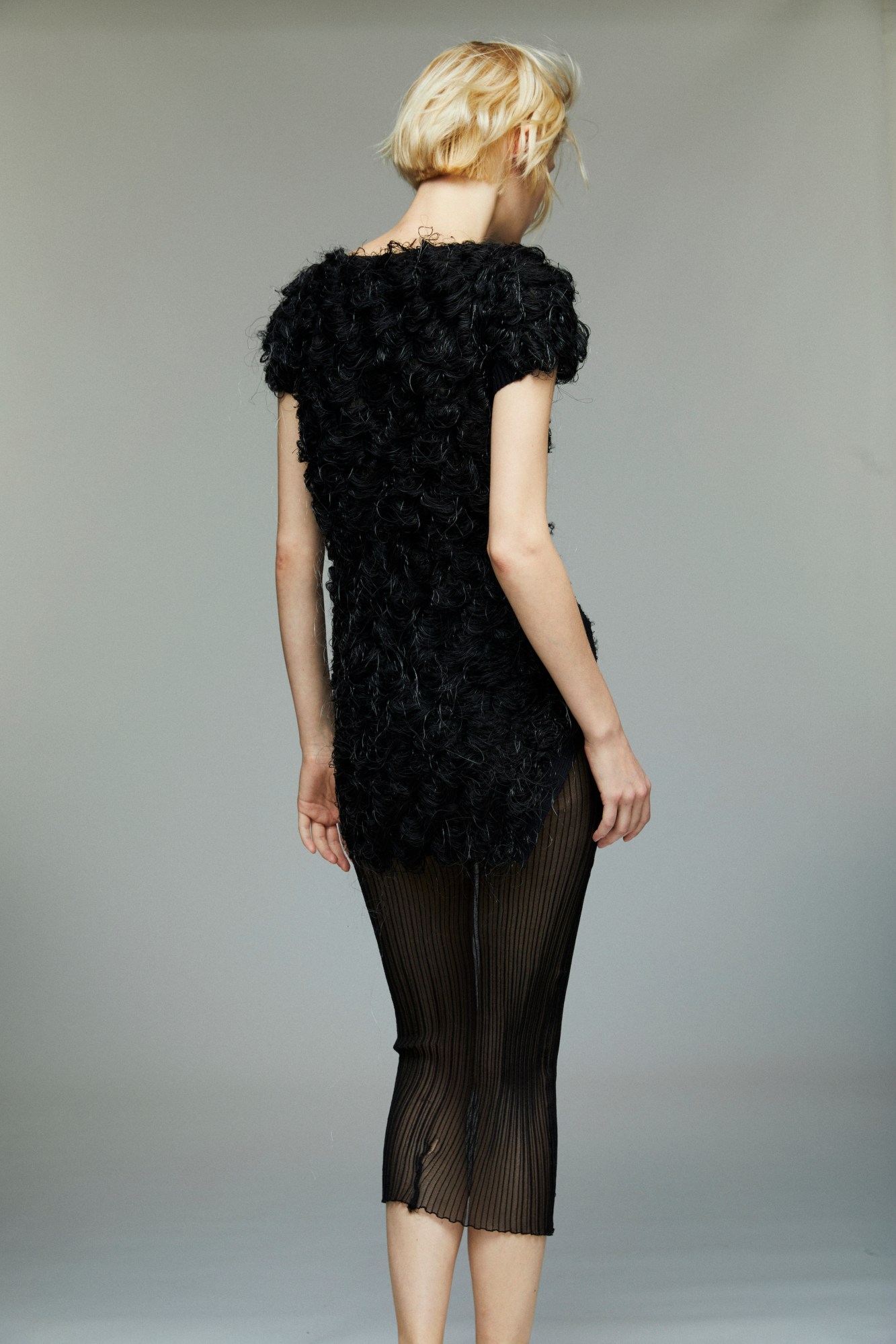
Growing up in a small town in Jutland, Amalie developed an interest in fabrics and materials at a young age. Her mom is a textile designer, and she remembers sketching first day of school outfits with her two sisters as a kid. Inspiration came from thrift shops, where Amalie gravitated towards pleated skirts, textured knits and highly manipulated fabrics, and eventually she learned to sew. “I don’t think we were exposed to a lot of fashion in the little city we were living in, but we made all of our own clothes and our own costumes,” Amalie explains. “It’s really nice to share something with your mom in that sense. I think it’s just natural to us, to always think about how we can make something, and it’s difficult to sit still. We always want to be doing something.”
After she finished high school, Amalie went to London and enrolled in some courses at Central Saint Martins. She wasn’t totally sure what she wanted to do next, but soon figured it out. “After seven months there, I was completely broke,” she says, “but I just knew that I wanted to pursue design.” So, she attended the Royal Danish Academy of Fine Arts, and by the fourth year was working with local designers Mark Tan and Cecilie Bahnsen. Amalie remembers adding loads of embroidery samples to her portfolio to get an internship at the latter, afraid she wouldn’t get the role because her focus was knitwear and Cecilie Bahnsen weren’t making any then. “Cecilie was like, ‘I really like that you knit, and if you want to do that for us, that would be great’. At that time, I had one starter knitting machine in my living room,” Amalie says. From there, she made 23 pairs of custom knit socks for the designer’s AW17 show before working in-house to help launch the label’s own knits.
“The passion is definitely, you know, sitting at the machine trying to test different yarns, different techniques — experiencing this change from the machine to seeing something else on the body,” Amalie explains. “Making something loop by loop, you can sit down not knowing what you’re making, and then find inspiration in that process.” But also, once you’ve developed a few favoured techniques, as the designer’s done, inspiration comes from challenging yourself, pushing the machine — and the patterns — to keep advancing the craft.

Against all odds, Amalie quit her job and rented a studio to go out on her own in 2019. She and the rest of the world had no idea that the pandemic was around the corner, but the designer began working on her first collection bolstered by the support of Copenhagen’s creative community. “It’s definitely a good place to start a new brand,” she says. “In London it was much more hardcore. It was really kind of like, if you don’t come from money, it seems impossible.”
Friends and famed photographers Maria Thornfeldt and Louise Thornfeldt shot one of Amalie’s first collections over the summer of 2020, while the city’s buzzy young designer Nicklas Skovgaard even styled some of her early shows, before turning to design himself. Soon after, A. Roege Hove joined Copenhagen Fashion Week’s NEWTALENT program, dedicated to uplifting young Nordic talent. (Nicklas is now on the roster, as well). And in 2021, Amalie won The Wessel & Vett Prize, Scandinavia’s most prestigious and independent award for fashion design, establishing herself as one of the top billed designers on CPHFW’s schedule, and captivating fashion fans and niche substacks worldwide. Flash forward to 2023, and not only have Maria and Louise photographed her SS24 campaign, but Amalie has another prestigious prize on her shelf — Woolmark’s Karl Lagerfeld Award for Innovation. “They live in Paris now, and are in a completely different place. I don’t know if I’m in a completely different place, but I do feel the brand at least is in a different place,” the designer says.
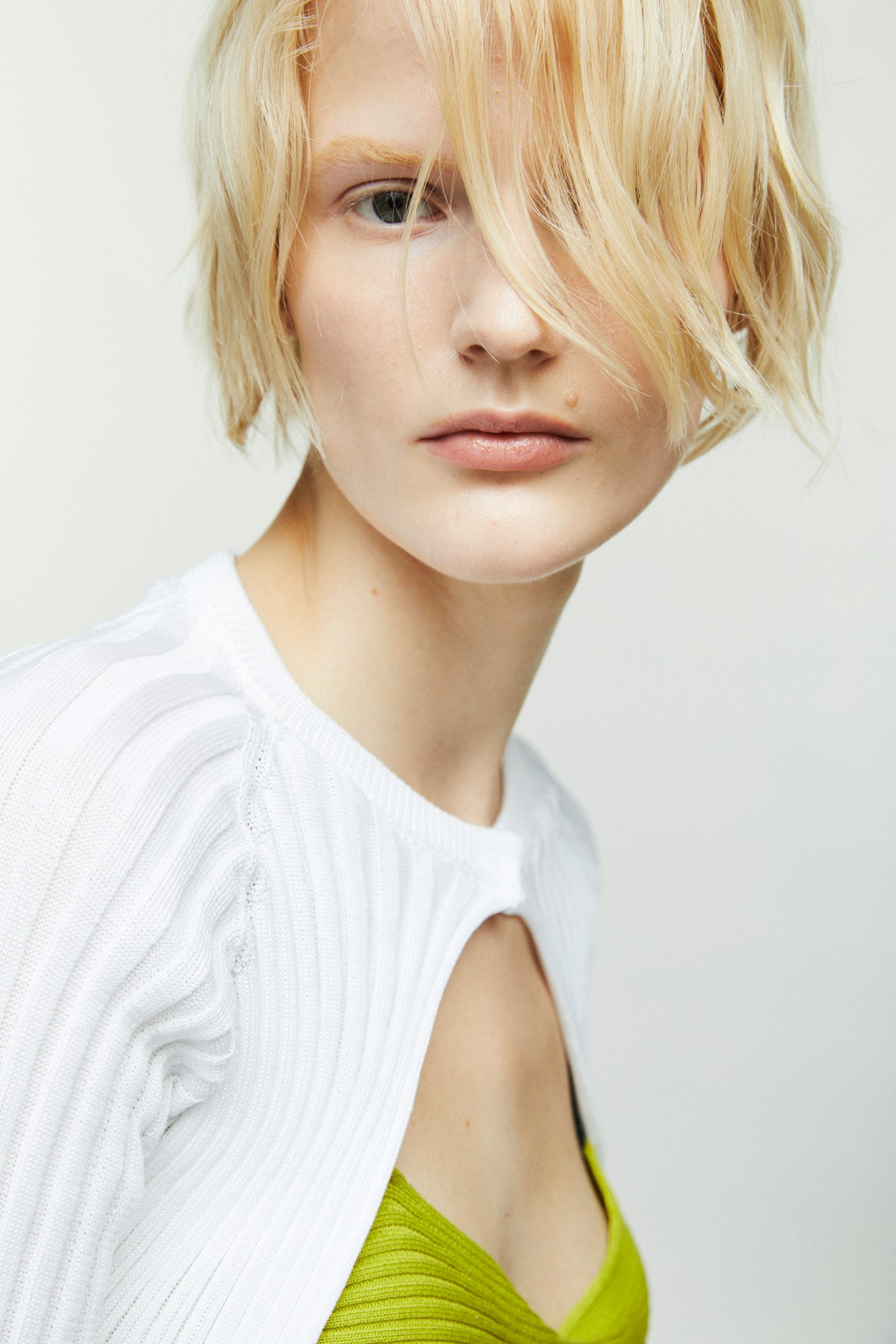
In the images, a white and black ribbed skirt is layered over an off the shoulder number; a rolled over tube top is paired with a green graphic cardigan and briefs, while a striped tunic mini dress — which revealed slivers of skin at the AW23 show — was worn over a long sleeve knit and skirt, three different woven techniques converging to create an entirely new look. For Amalie, these layers add an element of sweetness to the collection, but they also show off the brand’s versatility, and inclusive design. Made in only two sizes, with the kind of stretch you can only imagine until the knits are in your hands, an A. Roege Hove piece is for any and every body. “Our garments really come to life on a body, changing the way the style looks,” Amalie says. Details like string closures, or reversible styles — nearly all of them can be worn back to front — allow the wearer to personalise the garments to their liking, to what looks and feels comfortable, and to their own unique personal style. Each collection builds on this idea, creating additional layers that work in tandem with a core collection.
Early coverage of Amalie’s designs often focused on this aspect — how revealing the garments are, or could be — and their slinky, sexy silhouettes. Her translucent knits often show off the nipples, the hips, swathes of skin at the mid-section, but it’s the relationship with the body, the skin and the degree to which it’s revealed that intrigued the designer. Her knits are a subversive contrast, they flip the tradition of the fashion category on its head: “I think what drew me is this expectation of knit being soft, or thick. When you add skin, you just see something different in it… I really liked something that was quite stiff, it’s one thing outside of the body, and then putting it on, you have this transformation.”
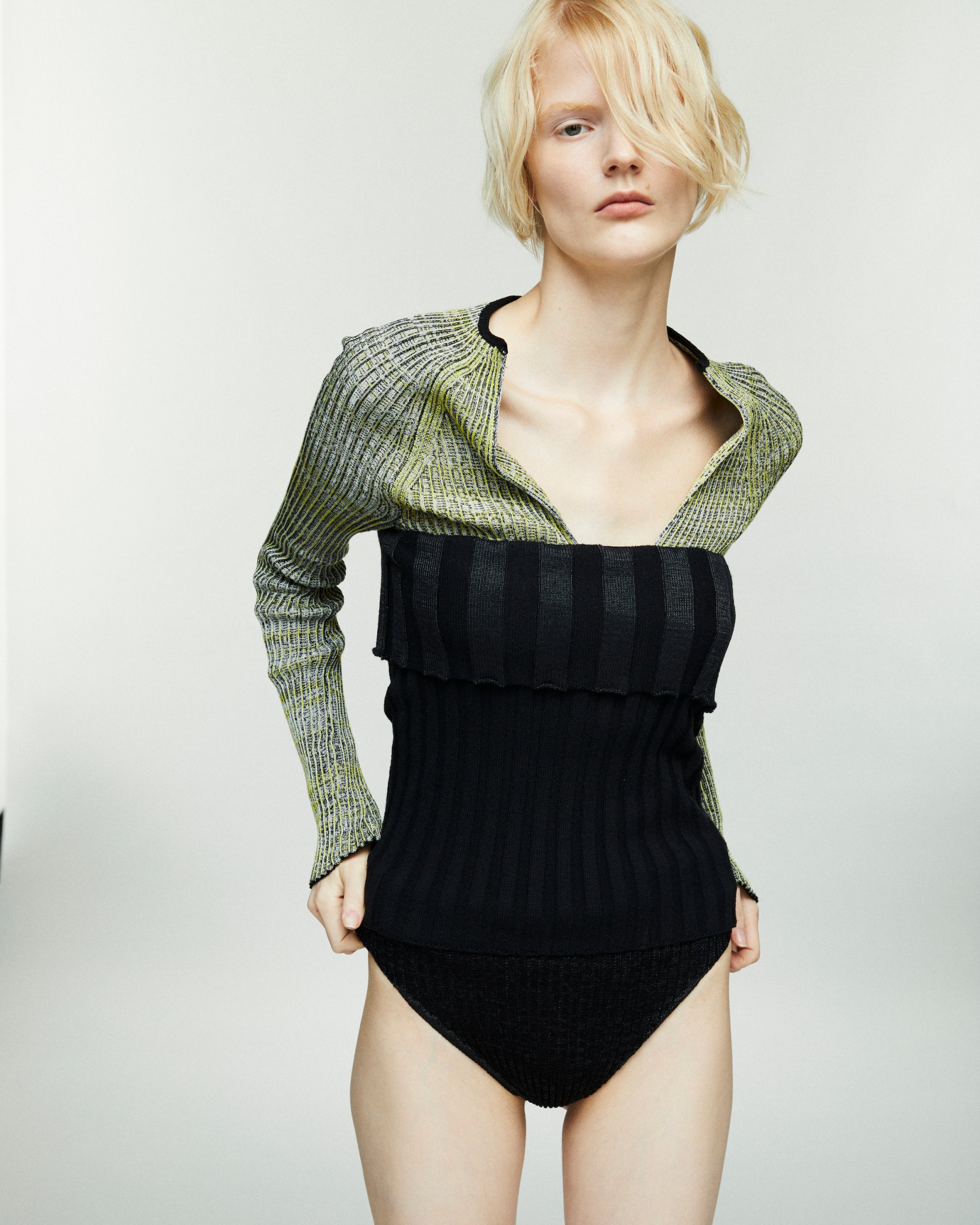
The designer portrayed this element of sartorial transformation in her AW23 show, which took place in a square black box of a room. Not unlike Coperni a few months prior, in which Bella Hadid was spray-painted into a dress for SS23, a model wearing only briefs stood under a spotlight, where layer upon layer of A. Roege Hove’s signature gauze knits were spun around her body, stretched across the waist and bust, tied up the sides, and crinkled at the neck to create a funnel neck dress. It was comprised of three separate monochrome knits, and the intention was not virality, but to let the eager editors in the audience experience the layering possibilities and the tactility of the garments. It was about connection.
Because the designs are inherently sculptural, the experience felt more like an art exhibition than a catwalk, at least until the rest of the models emerged and the runway show began. This experience, and that of Amalie’s rain-soaked SS24 offering, are what set A. Roege Hove apart from some of the designer’s Danish cohort — an unparalleled emphasis on technique, and an artfulness in the garments. One wants to put on an A. Roege Hove knit to be a part of the community, a sculpture in the brand’s empowering, aesthetic universe. “In fashion, we want people to admire the pieces like art,” Amalie says. “Art can be something to appreciate from a distance, but for us, the interaction is key to making our styles come to life.”
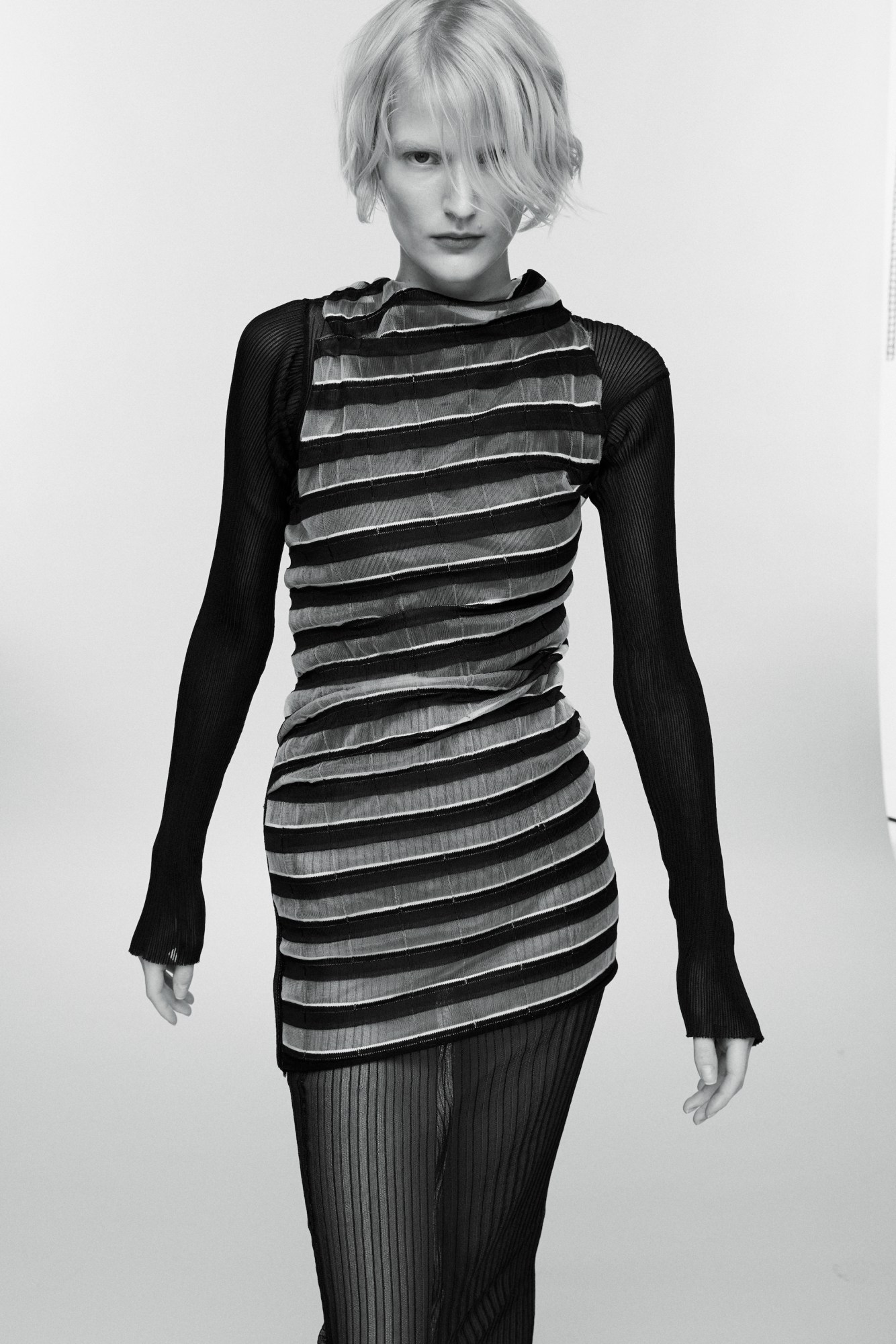

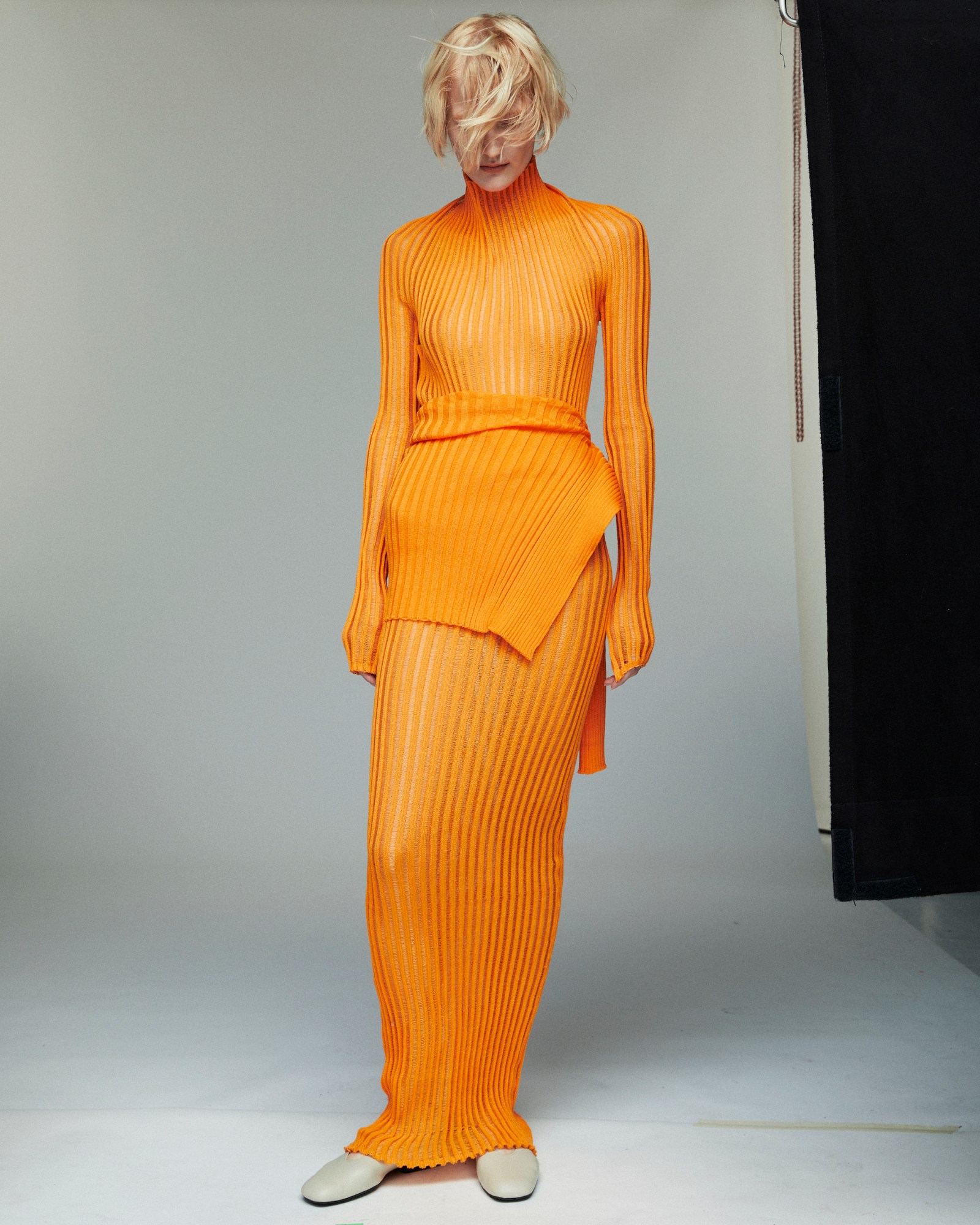
Credits
Photography Maria and Louise Thornfeldt

